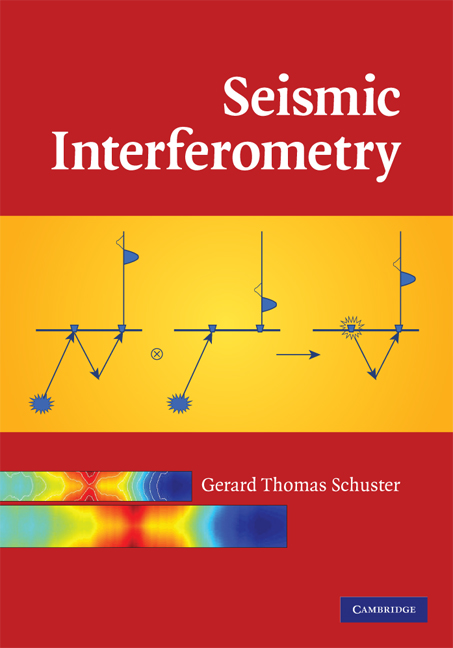Jerry Schuster's book: Seismic Interferometry

Seismic interferometry is an exciting new field in geophysics
utilising multiple scattering events to provide unprecedented
views of the Earth's subsurface. This is the first book to describe
the theory and practice of seismic interferometry with an emphasis
on applications in exploration seismology. Exercises are provided at
the end of each chapter, and the text is supplemented by online MATLAB
codes that illustrate important ideas and allow readers to generate
synthetic traces and invert these to determine the Earth's reflectivity
structure. Later chapters reinforce these principles by deriving the
rigorous mathematics of seismic interferometry. Incorporating examples
that apply interferometric imaging to synthetic and field data, from
applied geophysics and earthquake seismology, this book is a valuable
reference for academic researchers and oil industry professionals.
It can also be used to teach a one-semester course for advanced
students in geophysics and petroleum engineering.
* The first book to fully describe the new technique of
seismic interferometry, with examples from exploration and
earthquake geophysics.
* Includes end-of-chapter review questions that allow readers
to monitor their understanding of the material presented.
* Is supplemented by online MATLAB codes for forward modeling
and interferometry simulation.
Contents
Preface
1. Introduction
2. Reciprocity equations
3. VSP-->SWP correlation transform
4. VSP-->SSP correlation transform
5. VSP-->SSP convolution transform
6. SSP-->SSP correlation transform
7. VSP-->VSP correlation transform
8. SSP-->VSP-->SWP transforms
9. Traveltime interferometry
10. Stochastic interferometry
11. Source estimation
12. Body wave earthquake interferometry
Index.
The main URL for the book can be found on the
Cambridge WWW site
.
Free online resources for this book
.



